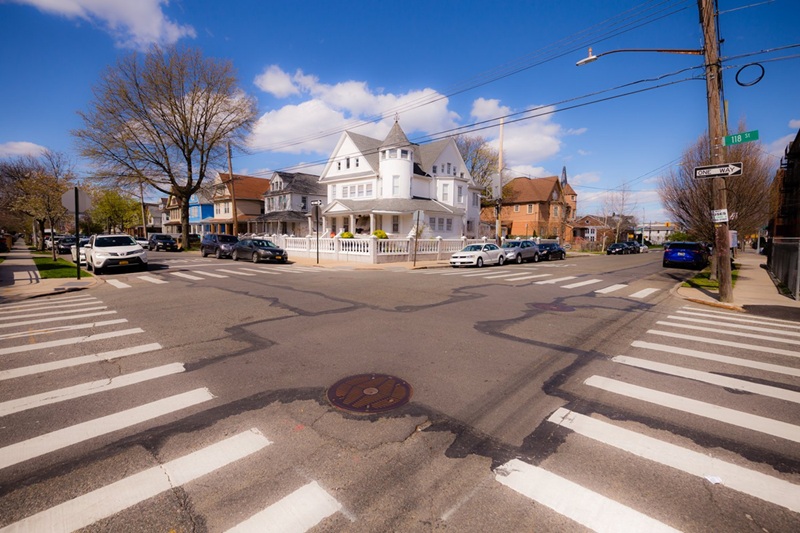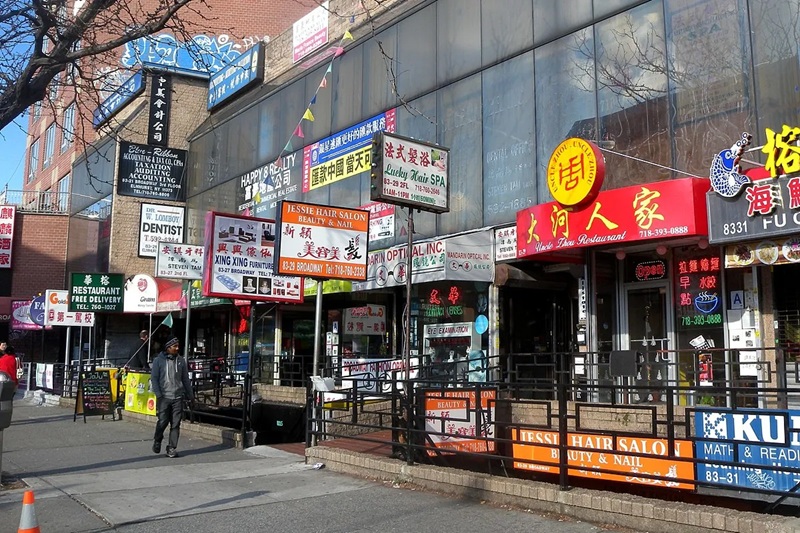
Richmond Hill East is a dynamic and diverse neighborhood located in the southeastern section of Queens, New York. Part of the larger Richmond Hill area, this district is known for its rich cultural heritage, mix of residential housing, and vibrant community. With its affordability, excellent transportation links, and growing development, Richmond Hill East offers a combination of old-world charm and modern conveniences that make it an attractive place to live for families, working professionals, and newcomers to New York City.
History and Development
Richmond Hill East has its origins as part of the larger Town of Jamaica, which was first established in the 17th century. Over time, the area evolved from farmland into a thriving residential neighborhood. Richmond Hill East, in particular, started to develop in the early 20th century as part of the suburbanization of Queens. Like many parts of Queens, the neighborhood grew rapidly after the extension of the subway system and the development of new transportation infrastructure, including the Long Island Rail Road (LIRR) and A train stations.
While many parts of Richmond Hill East reflect the area’s historical development with charming, older homes and a suburban feel, newer residential and commercial development has added to the neighborhood’s growth. The area continues to see rising demand for housing due to its proximity to JFK International Airport and the rest of Queens, making it an increasingly desirable location for a diverse and growing population.
Cultural Diversity
Richmond Hill East is a true melting pot, characterized by its cultural diversity. Over the years, it has become home to residents from all over the world, including significant populations from the Caribbean, South Asia, Latin America, and Europe. One of the most prominent cultural influences in the neighborhood comes from the Indian and Indo-Caribbean communities, particularly Guyanese immigrants. This cultural influence has helped shape the neighborhood’s identity and is reflected in its local businesses, restaurants, and annual events.
Richmond Hill East is often referred to as a hub for Indo-Caribbean culture, with Guyanese, Trinidadian, and Indian communities playing a key role in the neighborhood’s vibrancy. This is evident in the many Indian and Caribbean restaurants, shops, and markets that line the streets, offering everything from traditional curry dishes to rotis, roasts, and freshly baked breads.
The neighborhood is also home to a sizable Latino population, contributing to the multicultural mix with food markets and eateries that serve Latin American cuisines. As a result, Richmond Hill East offers an incredible variety of international cuisines, ranging from West Indian roti and curries to Latin street food, making it a gastronomic destination for those seeking diverse culinary experiences.
Residential Life and Housing
Richmond Hill East is a primarily residential neighborhood, with a range of housing options suitable for different lifestyles. The area is known for its suburban feel, with tree-lined streets, detached single-family homes, and smaller multi-family buildings. Many of the houses in the neighborhood are two-family homes that offer an affordable option for families looking for more space compared to other parts of New York City. These homes typically feature private yards and the charm of early-to-mid-20th-century architecture, with brick facades and open layouts.
In addition to single-family homes, there are also apartment buildings, co-ops, and condominiums that cater to renters and those seeking lower-maintenance living options. The housing stock in Richmond Hill East is often considered more affordable than many other neighborhoods in Queens, making it attractive to a wide range of people, from young professionals to families looking for more space without the high price tag.
The neighborhood’s real estate market has seen steady demand in recent years, with both homebuyers and renters attracted to the affordability of the area, as well as its proximity to transit and amenities. While Richmond Hill East retains much of its historic charm, new developments are beginning to emerge, which could further enhance the area’s appeal as a residential community.
Transportation and Accessibility
Richmond Hill East benefits from excellent transportation connections, making it a highly accessible neighborhood for commuters and residents who need to travel throughout New York City. The A train, one of the city’s major subway lines, runs through the area, providing quick access to Manhattan (especially Midtown Manhattan) in under 30 minutes. The A train’s Lefferts Blvd station serves as a major transit hub for the area, connecting residents to the larger subway system, including transfers to the E, J, and Z trains.
In addition to the subway, Richmond Hill East is also served by multiple bus routes, including the Q10, Q56, and Q52/53, which provide easy access to neighboring areas such as Forest Hills, Jamaica, and Kew Gardens. For those who prefer to drive, the Van Wyck Expressway and Belt Parkway are nearby, offering direct routes to other parts of Queens, Brooklyn, and Long Island. JFK International Airport is also just a short distance away, making it a convenient location for frequent travelers.
Parks and Green Spaces
While Richmond Hill East is a primarily urban area, it offers several nearby parks and green spaces where residents can enjoy outdoor recreation. The Forest Park, located to the north, is one of the largest and most beloved parks in Queens. It features extensive walking and biking trails, sports fields, picnic areas, and playgrounds, providing ample space for outdoor activities and relaxation. The park is a popular spot for families, joggers, and nature lovers alike.
In addition to Forest Park, the nearby Jamaica Bay area provides access to waterfront activities like birdwatching, nature walks, and cycling. The Spring Creek Park, located to the east, also offers opportunities for outdoor leisure, with fields and open space ideal for picnics, sports, and enjoying the outdoors with family and friends.
Education and Community Life
Richmond Hill East is part of the New York City Department of Education district, which means residents have access to a variety of public schools in the area. The neighborhood is home to several elementary, middle, and high schools that cater to local students. For those seeking private education, there are also religious and independent schools in the surrounding area.
The community life in Richmond Hill East is strong, with active local organizations and cultural groups working to improve the quality of life for residents. The neighborhood is home to several religious institutions, including churches, mosques, and temples, which play a central role in community events and social activities. These institutions help to foster a sense of belonging and unity among residents, as they celebrate cultural festivals and host community outreach programs.
The Richmond Hill Library, part of the Queens Public Library system, offers educational programs, free events, and public services to residents of all ages. The library hosts a variety of classes, workshops, and community events, helping to promote lifelong learning and personal development.
Shopping and Dining
Richmond Hill East features a wide array of local businesses that cater to the diverse population. The neighborhood is home to a variety of grocery stores, markets, and specialty shops that offer international products, ranging from fresh produce to spices and packaged goods. Many of these businesses reflect the ethnic diversity of the area, offering ingredients from South Asia, the Caribbean, and Latin America.
The neighborhood’s dining scene is rich and diverse, with many restaurants serving Caribbean, Indian, Latin American, and South Asian dishes. Whether you’re in the mood for flavorful Indian curries, Guyanese roti, or Dominican mofongo, Richmond Hill East offers a variety of food options that celebrate the multicultural fabric of the community.
Additionally, Jamaica Avenue, a major commercial street running through the area, provides residents with shopping, retail stores, and dining options. The neighborhood is also home to local cafes, delis, and bakeries that serve as social hubs for residents.
Conclusion
Richmond Hill East offers a unique combination of affordable housing, cultural richness, and accessibility that makes it an attractive choice for a variety of people. With its diverse community, strong transportation connections, and evolving real estate market, the neighborhood has become an increasingly popular destination for those seeking a mix of suburban tranquility and urban convenience. Whether you are drawn to its rich cultural heritage, its green spaces, or its local businesses, Richmond Hill East continues to be a vibrant and welcoming community in Queens.

